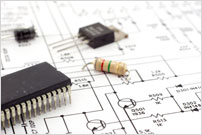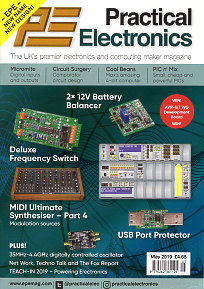May 2019 Issue
A summary of this month's contents.
2x 12V Battery Balancer
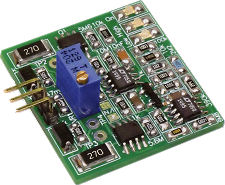 If you’re on the look-out for a 24V battery you might think of using two 12V batteries in series. That brings a whole new set of problems as their terminal voltages and state of charge may not be identical which can result in over-charging or under-charging. This battery balancer project will help overcome the “potential” problems of coupling two 12V batteries together this way, and several can be paralleled to obtain still higher capacity batteries.
If you’re on the look-out for a 24V battery you might think of using two 12V batteries in series. That brings a whole new set of problems as their terminal voltages and state of charge may not be identical which can result in over-charging or under-charging. This battery balancer project will help overcome the “potential” problems of coupling two 12V batteries together this way, and several can be paralleled to obtain still higher capacity batteries.
Suitable for any type of battery chemistry, especially lithium-based ones which have more critical needs. Low-voltage cut-out, low quiescent current, LED status indicators.
![]() Surface mount components are used throughout. Good soldering skills are needed to complete this project successfuly.
Surface mount components are used throughout. Good soldering skills are needed to complete this project successfuly.
Deluxe Frequency Switch
 This project lets you switch devices on or off according to the frequency of just about any sensor signal, up to about 10kHz. Applications include motor, flow meter or turbine control.
This project lets you switch devices on or off according to the frequency of just about any sensor signal, up to about 10kHz. Applications include motor, flow meter or turbine control.
It energises a 5A c/o relay when a signal exceeds a preset frequency (minimum 1Hz.) and has adjustable hysteresis. Easy push-button setup using a sig. gen or frequency meter. PIC16F88 based, with source/ hex code downloadable from our website (link, above right)
Using Cheap Asian Electronic Modules (Part 16)
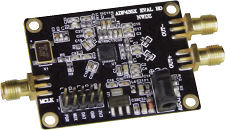
We examine a cheap-as-chips 35MHz - 4.4GHz digitally controlled oscillator based on the ADF4351 PLL i.c. The readily-available module can produce a sinewave with crystal-controlled accuracy or can be used as a sweep generator.
USB Port protector

An essential accessory for anyone hooking projects or Arduino shields etc. to the USB port of a PC or laptop. This project will help protect motherboards, and peripherals that are connected to them, from mishaps such as shorting 12V rails to the 5V supply somewhere. Very compact design, in-line USB ‘A’ ports.
![]() Surface mount components are used throughout. Good soldering skills are needed to complete this project successfuly.
Surface mount components are used throughout. Good soldering skills are needed to complete this project successfuly.
MIDI Ultimate Synthesiser (Part 4)
This month the circuitry for the excellent MIDI Ultimate Synthesiser’s modulation sources (LFO and envelope shaper) are assembled. This exceptional series offers a unique and exciting opportunity to build your own quality synthesiser and it’s generously illustrated with diagrams and photographs making the project suitable for anyone who can solder neatly and methodically.
Teach-In 2019 – Powering Electronics
(Part 6): Voltage Multipliers

Our latest Teach-In tutorial offers readers an insight into all aspects of powering your electronic projects and designs. This month, voltage multipliers and reservoir (smoothing) capacitor selection are examined. Also, our tutor delves deeply into the specifications behind electrolytic capacitors, including equivalent series resistance (ESR), dissipation factor, ripple and more besides. An in-depth series that you won’t find elsewhere! A practical project is included – a 9V-to-15V CMOS logic supply converter.
PIC n’ MIX
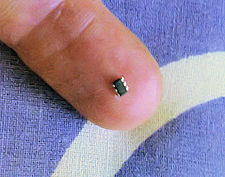
Our PIC micro expert goes back to basics, looking at Microchip’s smallest and most feature-limited processor, the PIC10F200 family. Sold in 8-pin DIL and six-pin SMT packages, we utilise both of them during the series as it’s ideal for simple dedicated tasks.
Make it with Micromite
Part 4: Digital Inputs and Outputs
Construction and testing of this BASIC-programmable PIC-based microcontroller continues with checking that the I/O functions perform correctly, then getting started by creating some simple switching modes.
![]() Make It With Micromite: Please Take Note
Make It With Micromite: Please Take Note
In Part 3 (Fig. 2 on page 63) the component side of the stripboard layout incorrectly shows a track cut at position X21. The cut should not be there. The copper track view in Fig. 2 is correctly shown with no break at X21. If you have made this break, simply bridge it again with a link wire.
Also in this issue:
- The Fox Report – the future of 4K and 8K TV with updates from the leading industry analyst Barry Fox
- Circuit Surgery – comparator circuit design, op.amps vs. comparators, Schmitt triggers and more
- Techno Talk – some weird and (not so) wonderful gadgets on sale
-
Audio Out: Backing Baxandall (Part 2) Our analogue audio expert describes a mini-sized Baxandall tone control. Originally intended for fuzz pedals, it’s adaptable for audio amp use and more besides.
- Net Work – swapping to LED lightbulbs, 5G hubs and OneWeb’s satellite fleet blasts off
- Max’s Cool Beans –the glorious Maxfield-Farr 4-bit HRRG Computer and other news!
- Electronics Building Blocks – a cheap PWM driver with digital display for just £4
Next month
Teach-In 2019 (Part 7): negative voltage converters; Arduino-based LC Meter; USB Flexitimer; MIDI Ultimate Synthesiser (Part 5); Low-cost Electronic Modules: 4GHz digital attenuator; Make it with Micromite (Part 5): more digital I/O and a Dice project.
Contents may be subject to change.
There’s more in PE than ever before! PE is packed with practical electronics projects and theory for the hobbyist. You can order a printed copy of PE for delivery to your door (worldwide), or try the PDF Version (needs Adobe Reader for Windows), or the Pocketmags for your mobile device. Subscribe now!
Source code file 0519.zip
[Audio Out; Circuit Surgery; Freq Switch; Electronic Modules; Ultimate MIDI Synth PCB.]
PCB artwork
As from July 2013 issue PCB artwork is available free to subscribers only.
Non-subscribers may purchase artwork files for a nominal sum. Please contact our Orders Dept for information or to place an order.
EPE Printed Circuit Boards
We can supply ready-made printed circuit boards (8-digit order codes) to the original design specification via mail order or from our Online Shop.

